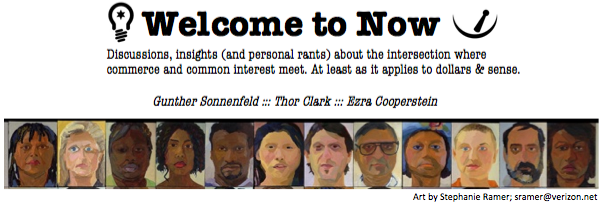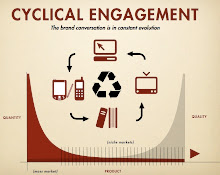... To more Degas-like Impressionism (or more aptly known as disambiguation).
Wednesday, January 6, 2010
#YouTube #Counterculture and #Transmedia #Art
... To more Degas-like Impressionism (or more aptly known as disambiguation).
Tuesday, January 5, 2010
Blogs, Vlogs and Pay Walls... Now What?
[image credits: omg-ponies.com & writethirty.com]
So now what? As the saying goes, Compromise, if not the spice of life, is its solidity. It is what makes nations great and marriages happy. If you don’t want to look at ads, then it’s time to pay the piper. And believe it or not, that piper... Could be you.
Sunday, January 3, 2010
Welcome to the Age of Personalized Publishing
I can create my own dynamic platform. I’m hyper-connected. I don’t have to follow anyone or join groups because my preferences constantly change. I can be wherever and whomever I want to be. I don’t have to search for great content, it finds me. And I can act with purpose.
Banners are now publishing units.
Microsites are now micromedia.
Search is a sole function of community.
Social utilities are a part of the mainstream.
Doing good is the same as making money.
‘Online’ and ‘offline’ are married.
People are media.
‘Experts’, ‘gurus’ and ‘evangelists’ no longer exist.
Great storytellers do, however. Production is truly democratized.
Collaboration is editorialized.
History is recontextualized.
Artifacts are cherished. Agencies are facilitators.
Brands are micropublishers.
Publishers are anthropologists.
Technologies build culture.
Networks provide meaning.
Studios support infrastructure. Governments listen.
Politicians act.
Teachers transcend.
Please, tell me, is this just a dream?
Wednesday, December 30, 2009
The Digital Landscape: No Longer Truly Predictive, No Longer Purely Online
Consumptive behaviors and user archetypes are constantly changing, and these aren't purely functions of 'digital' or 'analog', 'online' or 'offline', but rather experience extraction, creation and recreation. And these aren’t things we can predict, but rather things we must adapt to. As Griffin Farley puts it so brilliantly on his blog: “Plan not for the people you reach, but the people they reach.”
As for being smarter about developing and selecting ads, what all of this data tells us in sum is that no one really cares about ad-like objects... and if that means disguising ads as entertainment, then so be it, but the reverse is not likely, at least not anymore. Or, you can simply create a conversation and then determine what your messaging can be as the result of a collaborative experience. Here’s an example of a happy medium we’re developing through a platform we call AdTalker (and no, we’re not afraid to share this because the idea isn’t entirely new, but the backend data framework – the secret sauce – certainly is ;):
- adaptive analytics — how we move with markets, not just channels or inventory
- publishing versus messaging — creating, enabling and propagating conversations & experiences
- thinking of mobile (or mobility) as more than just a platform — geotilities as the regular instigators of physical connectivity
- socializing the more 'traditional' forms of media through these stronger content offerings and extensions (OOH, print, radio & TV)
- living a more enriched life -- (you fill in these blanks ;)
Going forward, do not fear technology, because even though it has leapt ahead of our thinking for a good many years, it now depends on our evolution as people. Technology, after all, cannot create experiences, it can only enhance them and help make them more accessible. People are pixels. People are media. Fathom that, and then entertain the possibilities, because now, we can all play a significant role in this evolution. <div style="width:425px;text-align:left" id="__ss_2668124"><a style="font:14px Helvetica,Arial,Sans-serif;display:block;margin:12px 0 3px 0;text-decoration:underline;" href="http://www.slideshare.net/goonth/technology-integration-adaptive-vesus-disruptive-engagement" title="Technology Integration: Adaptive Versus Disruptive Engagement">Technology Integration: Adaptive Versus Disruptive Engagement</a>
Tuesday, December 29, 2009
Jon Samsel » Blog Archive » 30 Ad Agencies Ranked By Heardable Score
My friend and colleague Jon Samsel, SVP of Interactive Marketing at BofA, played around with Heardable tool in private BETA and wrote a nice piece on his findings earlier this month, including a bit on how some of the top global agencies rank based on their Heardable score.
It's interesting that this list should come out now, considering all the recent talk about how agencies should practice what they preach, particularly in their social communications efforts.
To reiterate, Heardable scans more than 20 on-site and 20 off-site variables (meaning outside of the main site but across the digital landscape) to provide a holistic purview of a brand's online visibility. We look at the primary areas of portability, shareability, measurability, sociability, actionability and searchability to assess a brand's score, as well as how it might compare to others in a particular category.
One other important thing to note is that while we start the process by scanning in a URL, we look at a brand's website as a conduit for its overall presence, meaning that in today's consumer environment, content must be syndicated and hyper-targeted to individuals and groups as they share and consume, when they share and consume. In this way, brands have effectively become publishers, and people follow good content (as well as engage with it), so those who serve up the best stuff in the best of ways will capture loyalty... plain and simple ;)
Monday, December 28, 2009
Talent imitates, genius steals: Myth of the Near Future
This film from Faris Yakob, in my humble opinion, really sums up the hypersocial relationship between brands, technology and entertainment in a simple, thought-provoking and powerfully contextual way. And of course, uses a nice narrative to do so ;)
And speaking of narrative, also note how Faris describes the use of transmedia elements as an integral part of one's social identity (that transcends one's presence online or offline, and certainly blurs the line between the two...), what I believe is a key distinction between transmedia development and integrated or branded content development.






